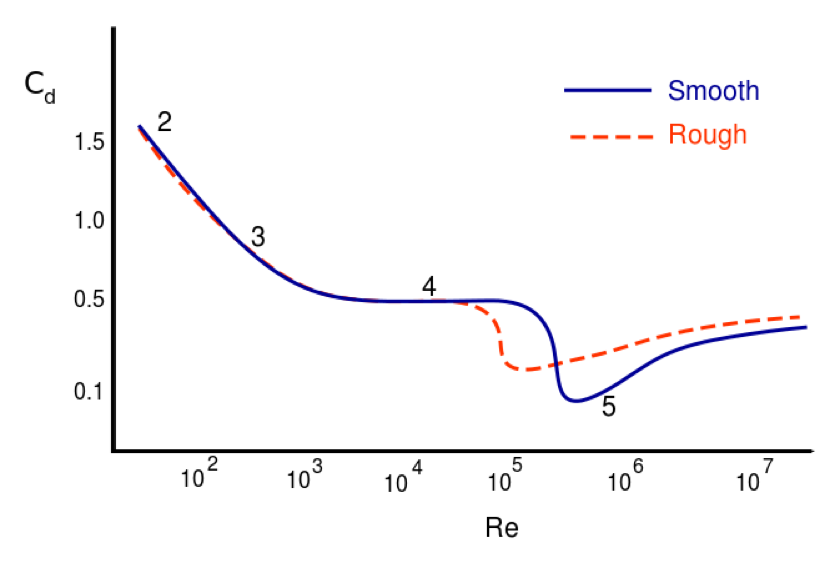Projectiles with air resistance
Consider a spherical object, such as a baseball, moving through the air. The motion of an object though a fluid is one of the most complex problems in all of science, and it is still not completely understood to this day. One of the reasons this problem is so challenging is that, in general, there are many different forces acting on such objects, including:
- gravity
- drag
- lift
- thrust
- buoyancy
- bulk fluid motion, such as wind
- inertial forces, such as the centrifugal and Coriolis forces
In most introductory physics and dynamics courses, gravity is the only force that is accounted for (this is equivalent to assuming that the motion takes place in a vacuum). Here we will consider realistic and accurate models of air resistance that are used to model the motion of projectiles like baseballs.

Reference material
Drag forces and drag coefficients
The drag force is always directly opposed to the velocity of the object. In vector notation, it is defined by the following equation.
Velocity angle from horizontal:
The free body diagram for a baseball subject to gravity and air resistance. Observe that the drag due to air resistance is always in the opposite direction to the velocity. Image credit: Microsoft clip art.
The magnitude of the drag force is characterized by the dimensionless drag coefficient \( C_{\rm D} \), given by the following equation.
Drag coefficients as a function of Reynolds number
A dimensionless parameter that is very useful in fluid dynamics is the Reynolds number, which is defined by the following equation.
An important result in fluid dynamics is that the drag coefficient is a function only of the Reynolds number of the fluid flow about the object. This is defined by the following equation.
Quadratic drag model
Notice from Figure #aft-fd that there is a range of Reynolds numbers (\( 10^3 < {\rm Re} < 10^5 \)), characteristic of macroscopic projectiles, for which the drag coefficient is approximately constant at about 1/2 (see the part of the curve labeled “4” in Figure #aft-fd). That the drag coefficient is constant means that, within this region, the magnitude of the drag force is proportional to the square of the object’s speed. Substituting \( C_{\rm D}=1/2 \) into the definition of \( C_{D} \) above, we obtain the following equation.
In the presence of gravity and quadratic drag alone, the net force on an object is given by the following equation.
Initial speed:
Initial angle:
Mass:
Diameter:
Trajectories of a projectile in a vacuum (blue) and subject to quadratic drag from air resistance (red). The air density is \( \rho = 1.225 \rm \ kg / m ^ 3 \) (standard sea-level atmosphere) and the acceleration due to gravity is \( g = 9.81 \rm \ m / s ^ 2 \). A regulation baseball has a mass of about \( m = 145 \rm \ g \) and a diameter of about \( D = 7.5 \rm \ cm \).
Did you know?
There is no well-measured record for longest baseball home run. It is claimed that Mickey Mantle hit a ball 643 feet (196 m), although this apparently included rolling on the ground. Other power hits by Mantle are reliably measured to be over 500 feet (152 m).
